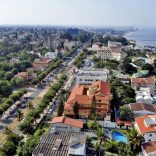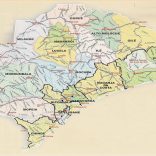Mozambique: Germany disburses €6 million for blue economy projects
“Measures need to deepen so that families may adopt production strategies”

O País
Economist João Mosca believes that the demographic dynamics revealed in the 2017 Census confirm long-term trends.
“In summary, high rates of growth and population concentration in cities, on the coast, in the corridors and in some areas of the plateau. This means that there are greater forces attracting the population, such as employment and business opportunities, and better access to public services in these areas. Public policies that favour cities contribute significantly to these dynamics, such as subsidies for energy, water, public transport, concentration of health services, education, among other aspects.
“Population growth has not been accompanied by changes in some sectors of the economy in order to absorb this growth. This is the so-called demographic trap, when population growth hampers or impairs the evolution of indicators that reflect the economic and social situation such as, for example, the creation of net employment (the difference between employment and unemployment created over a given period divided by the population of working age), per capita income, food availability in the country, malnutrition and the number of poor, infrastructure and medical or educational personnel.
“These indicators in Mozambique have worsened, and positive evolution is much lower than the growth rate of the economy. For example, today there are more illiterate Mozambicans than 40 years ago, although the percentage fell from around 90 to approximately 45 percent; in 2014 there were 700,000 poor Mozambicans more than in 2008; less staple foods is produced per inhabitant than 50 years ago, and so on. Access to education and health services, while increasing in absolute terms, has declined in relative(per capita) terms.
“These dynamics are also reflected in international indicators such as our slide in the Human Development Index (HDI). Mozambique is regularly in the last few places of the table, as well as in the ranking of per capita income, life expectancy, and education.
“Mozambique needs policies that contribute to changing these realities. On the one hand, there is a need for reforms in agrarian and rural development policies with institutional stability giving priority to food for the internal market. In health and education policies in order to increase services, improve quality and efficiency in the use of scarce resources and, no less important, in reducing disparities in access between rural and urban areas and between provinces and regions.
“These are the sectors that would contribute most to the reduction of poverty, hunger and malnutrition, and improve the well-being of the people. The improvement and extension of secondary and neighbouring roads and the provision of goods and passenger transport are important for the reduction of costs and therefore of consumer prices.
“On the other hand, it is important to boost families’ abilities to adopt family planning strategies that contribute to a healthy life, with economic opportunities and better well-being for future generations.
“It should be noted that the above and other measures only have medium- and long-term effects. However, the longer the delay in implementation, the greater the effects of the so-called ‘demographic trap’.”
By Celso Chambisso












Leave a Reply
Be the First to Comment!
You must be logged in to post a comment.
You must be logged in to post a comment.